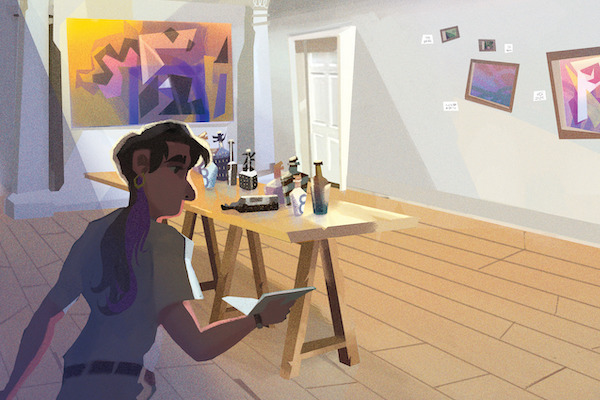By Clara Busé
Part of winning the 2020 Edge Award means the artist gets to have their work shown at Atlanta’s Swan Coach House Gallery. This year ’s winner was Maria Korol’s “Nightwork.” Korol is a fabulously talented artist born in Argentina, a heritage from which she draws inspirations as she channels into “Nightwork” both her family history, as well as the history of the Zwi Migdal — a Jewish crime organization active in the first half of the 20th century, who lured young Eastern European women to Argentina with promises of a better life just to turn them, upon arrival, into “ladies of the night.”
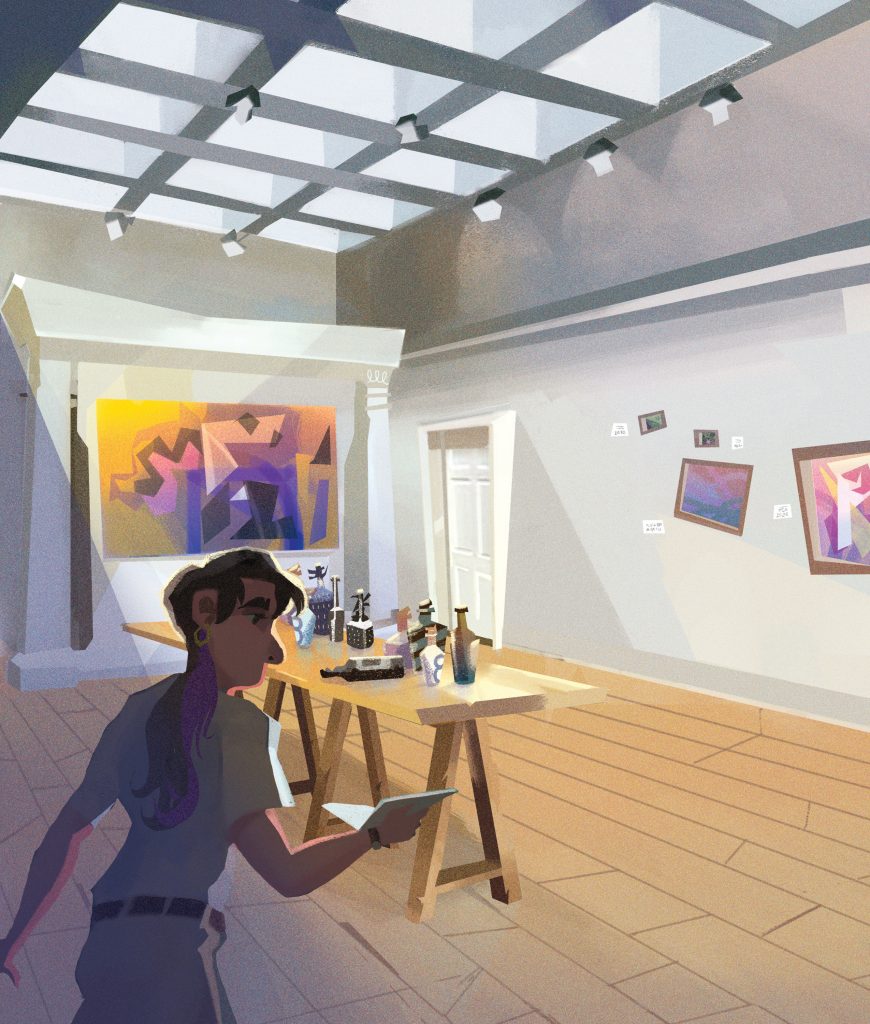
According to the artist statement, “These women were seldom recognized for their strength or having agency of their own. Instead, they were often reprimanded and chastised for having no moral character.” Playing off of these lines, Korol’s “Nightwork” honors these young women for their lives, ordeals and horrors, and perhaps, finds a way to finally give them agency. Upon entering the gallery, the viewer meets two stunning works. One is an ink-on-paper drawing of a seemingly depressed woman, titled “Cuarentena” (“Quarantine”).
Another is a vividly abstract oil pastel on paper work titled “Maria.” These two pieces set the tone for the rest of the exhibition: while the ink drawings tell the story of these women, the abstracted pastel works represent the women themselves: “Ruby,” “Raquel,” “Olivia,” etc. The titles are in themselves a proclamation of self-agency, that simple act of reclaiming the names of the commodified and objectified nameless. Korol creates her oil pastel works in layers, starting with an original ink-on-paper sketch, then a second layer of abstract imagery. These images go over the drawing until they have covered it entirely — it is here that Korol goes in and carves details into her pastel works. The process moves beyond the physicality of her female subjects, of their shown off, used and violated bodies. Truly, by removing the bodily objectification, Korol’s abstractions honor the essence of these women.
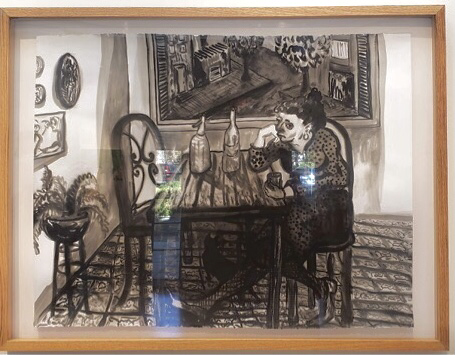
“Cuarentena” 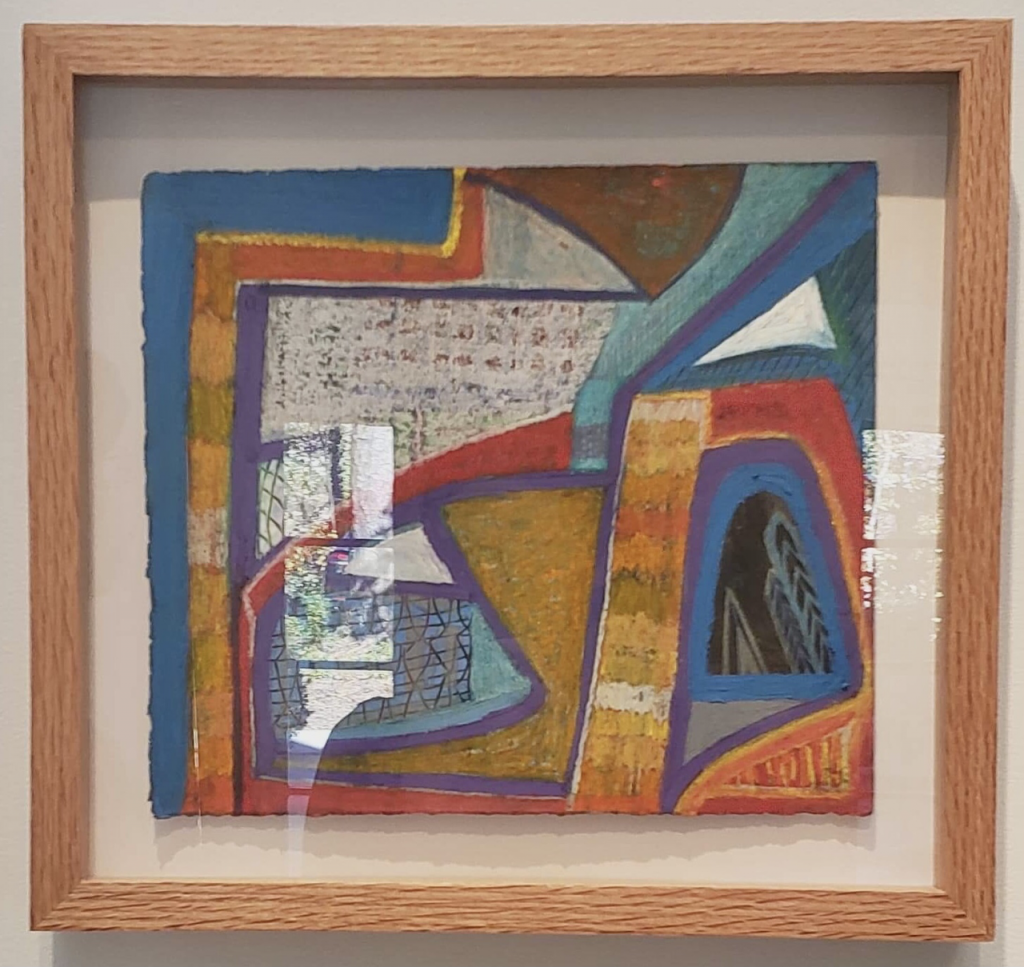
“Maria” 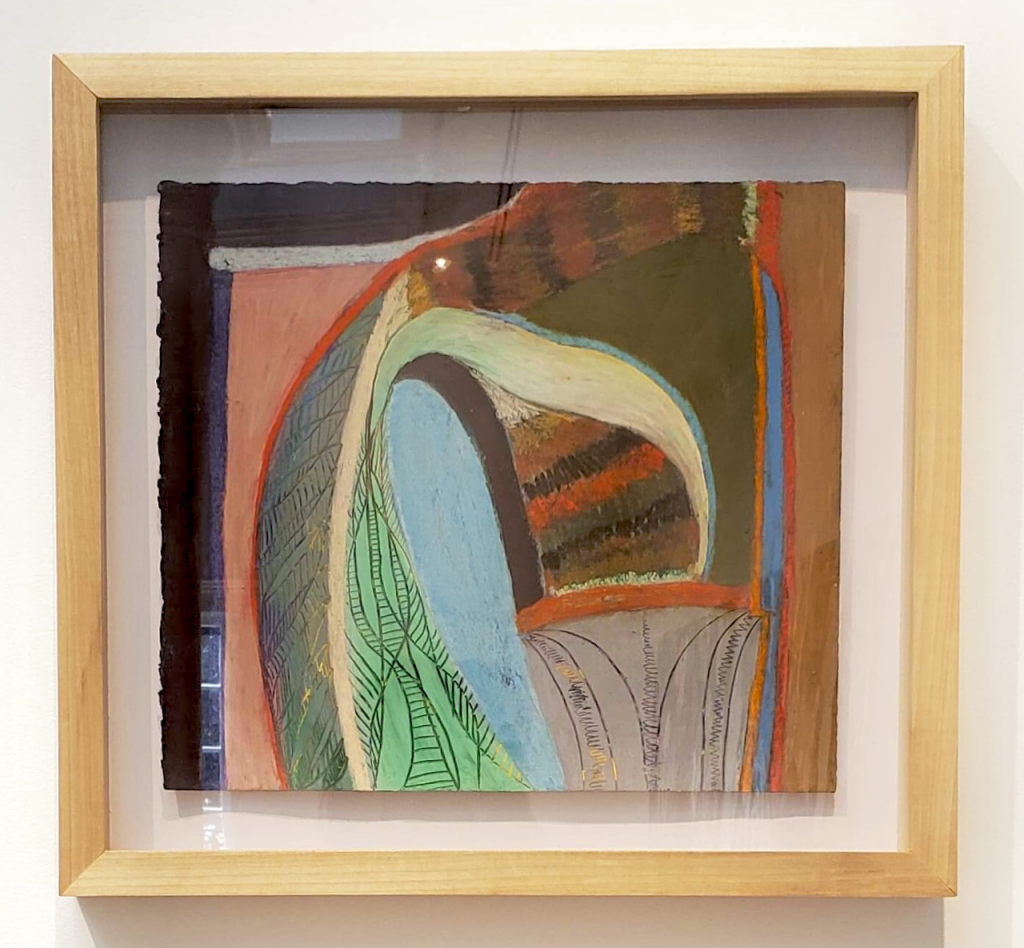
“Olivia” 
As for her ink-on-paper works, “El Mercado Espectacular” (“The Spectacular Market”) stands out from the crowd. The piece depicts a group of frowning naked women on a stage in front of a large group of men. The piece is exhibited in juxtaposition with the collection’s largest abstract piece, “El Dote” (“The Dowry”). From Korol’s titles, a story emerges, one of a wretched auction, followed by a cruel fate in sexual slavery. The show continues on with a series of vivid oil pastel works on wood panels,telling the story of the women. In “Cómo Llegar” (“How to Arrive”), Korol reflects the long boat ride taken by the women to get to Argentina. “Laburo Nocturno” (“Night-work”) shows the journey’s end result: not the better lives they were promised, but trickery and prostitution. The imagery in this piece particularly sticks. A young lady sits naked, wrapped in a sheet, with an old man coiling around her like a snake, putting his finger in her mouth, dominating her in his twisted fantasy, of which she is merely the vehicle. And there is nothing she can do but sit.
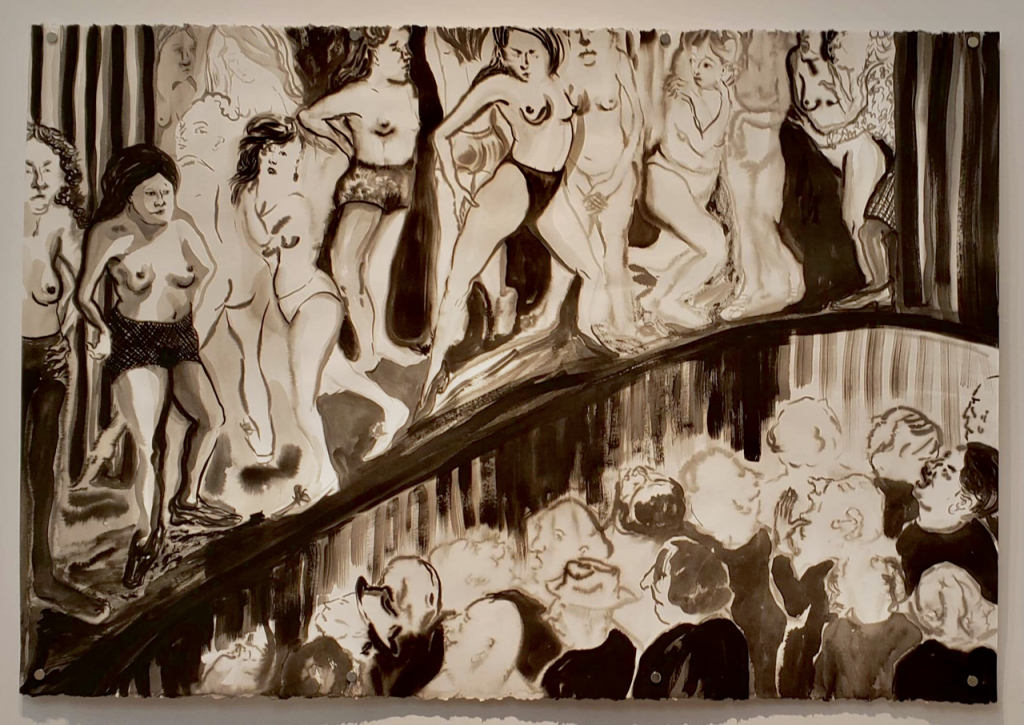
“El Mercado Espectacular” 
“Cómo Llegar” 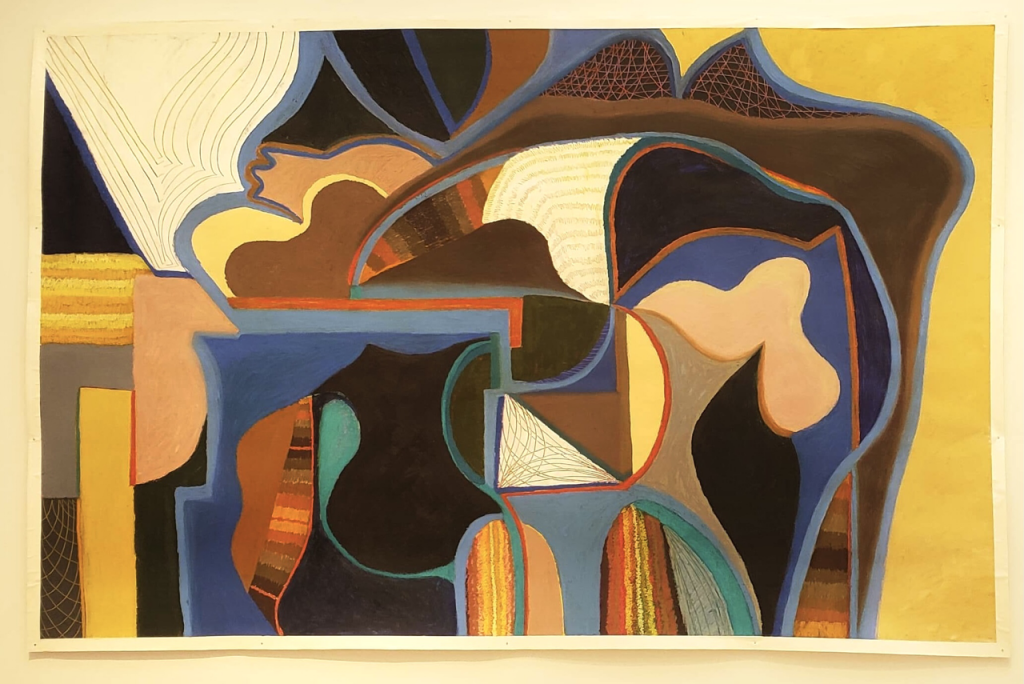
“El Dote” 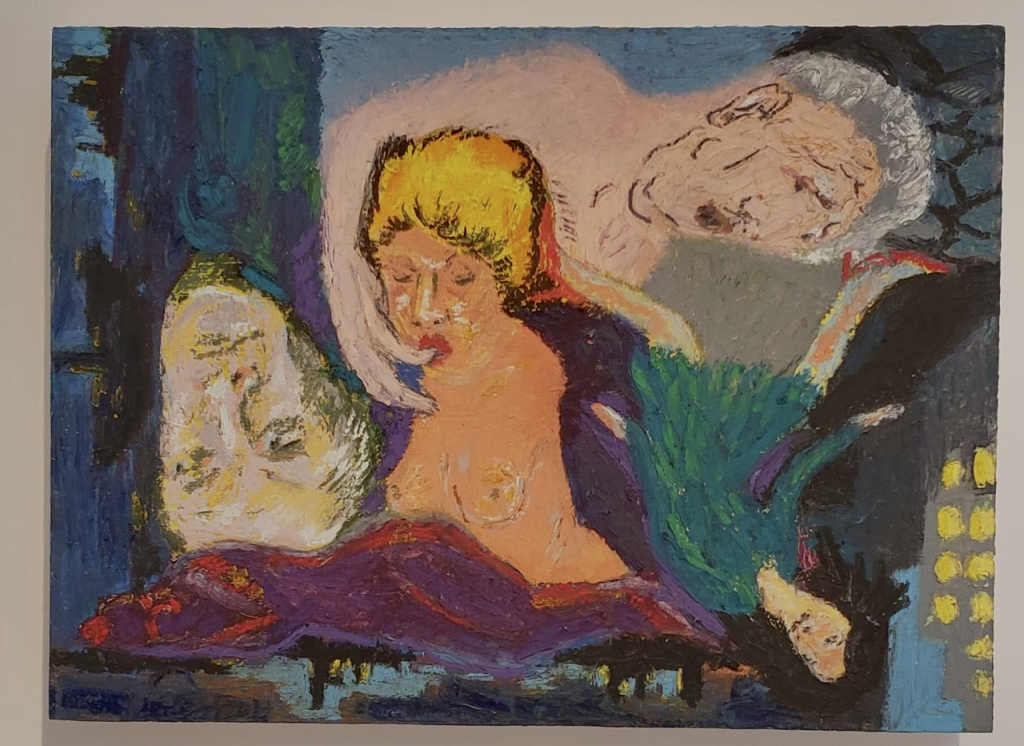
“Laburo Nocturno”
Finally, in the center of the gallery is an installation of hand-made clay bottles, corks, hair combs and trinkets. Titled “Vestigios” (“Remnants”), the work suggests the visual aftermath of “night-working”: a sense of being emptied, of being used, of being discarded.
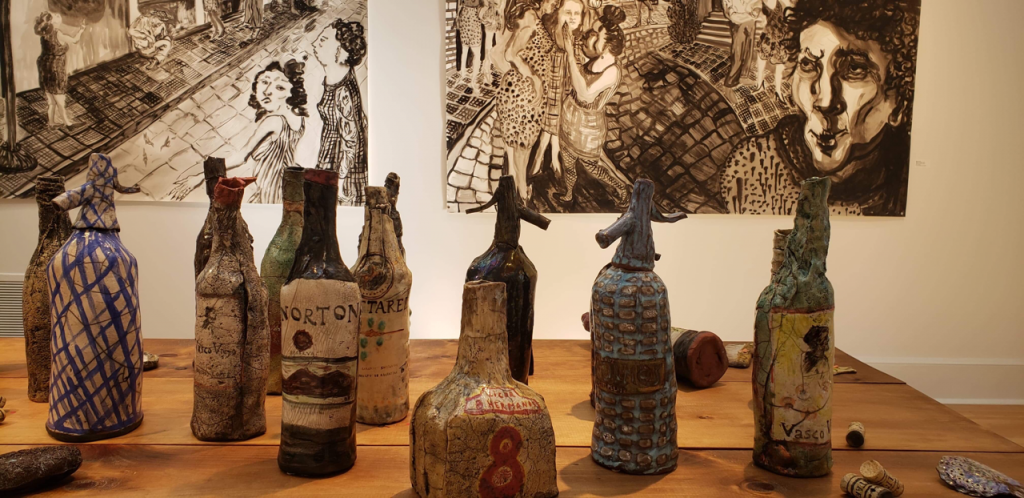
Korol’s “Nightwork” collection carries a strong narrative throughout many mediums and successfully tells the untold side of this story. No longer is the brand of the Zwi Migdal upon these women, they have been emblemized into artworks and icons in their own right, showing at last after decades their sense of humanity, their individuality, their endurance through these unfortunate fates, and, in a sense, their much belated freedom.
